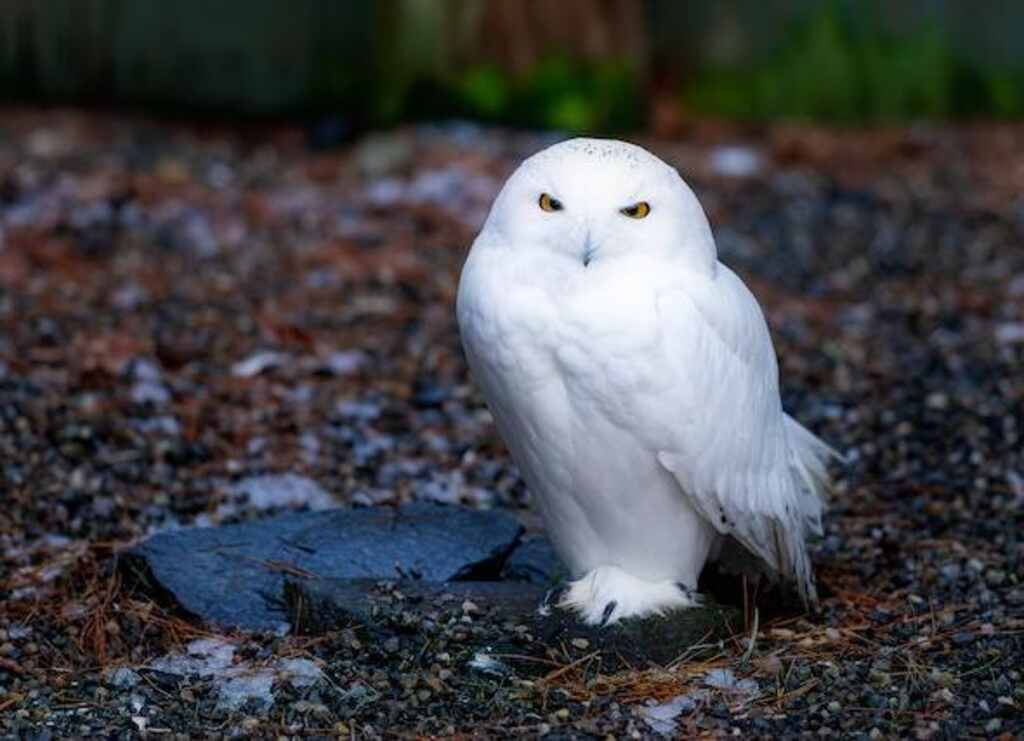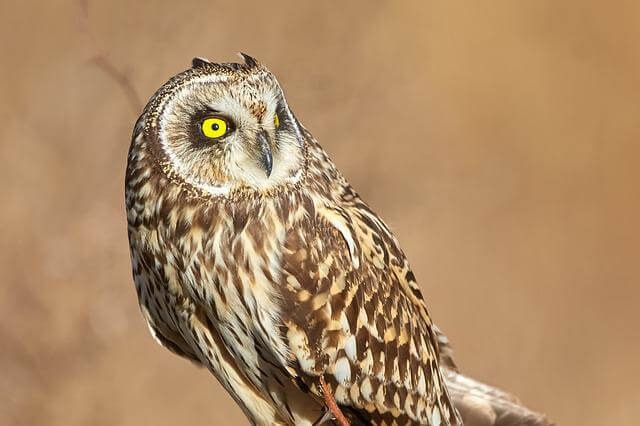Why do owls bob their heads? It’s a question that has puzzled both scientists and casual observers alike. Is it a sign of confusion, excitement, or just a fun little dance move?
Well, the short answer is that owls bob their heads to enhance their depth perception and improve their hunting skills. But the reasons behind this quirky behavior are more complex than you might think.
Keep reading to uncover the fascinating truth about why these nocturnal creatures can’t help but shake their heads.
Table of Contents
- 1 Definition of Owls
- 2 Overview of Owl Behavior
- 3 Explanation of Head-Bobbing in Owls
- 4 The Science Behind Head-Bobbing
- 5 The Art of Hunting: How Head-Bobbing Helps Owls Locate Prey
- 6 Communication and Head-Bobbing
- 7 Conclusion
- 8 FAQs: Why Do Owls Bob Their Heads?
- 8.1 What is head-bobbing in owls?
- 8.2 Why do owls bob their heads?
- 8.3 Do all owls bob their heads?
- 8.4 Is head-bobbing a sign of aggression in owls?
- 8.5 Can humans imitate the head-bobbing behavior of owls?
- 8.6 Do baby owls also bob their heads?
- 8.7 How fast do owls bob their heads?
- 8.8 Do owls bob their heads when they are not hunting?
- 8.9 Can head-bobbing in owls be used for identification?
- 8.10 Are there any other animals that bob their heads like owls?
- 9 Author
Definition of Owls
Before delving into owl behavior, it is important to understand what an owl actually is. Owls belong to the order Strigiformes and are birds of prey.
There are around 230 species of owls that can be found all over the world except Antarctica. They range in size from the tiny elf owl (which weighs less than an ounce) to the great gray owl (which can weigh up to 5 pounds).
Owls have several physical adaptations that make them exceptional hunters. They have sharp talons for grasping prey and a hooked beak for tearing flesh.
Their large eyes are specially adapted for low light conditions and allow them to see in almost complete darkness. Additionally, their feathers have evolved to create stealthy flight by muffling sound.
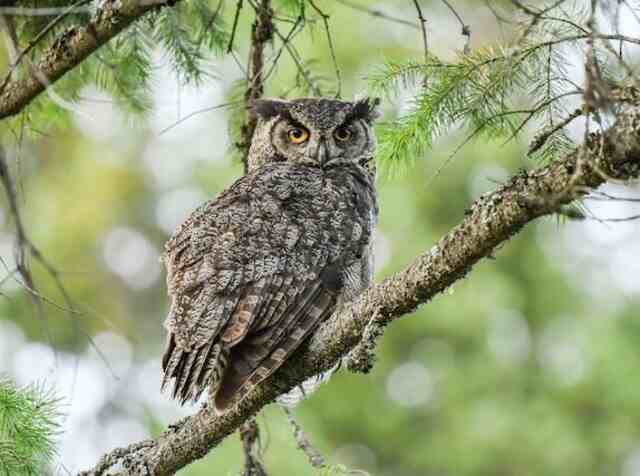
Overview of Owl Behavior
Mostly active at night, owls are classified as nocturnal animals and tend to sleep during the day. This behavior allows them to avoid competition with other birds of prey, such as hawks and eagles, which hunt during daylight hours.
During hunting, owls use a combination of senses such as sight and hearing to locate prey, which often includes small mammals like rodents or birds like songbirds or waterfowl depending on species. One interesting aspect about owl behavior is how they communicate with each other.
Owls are known for their hooting sounds that can either be territorial or used to attract mates. However, owls also use body language to communicate with each other, such as head movements like head-bobbing.
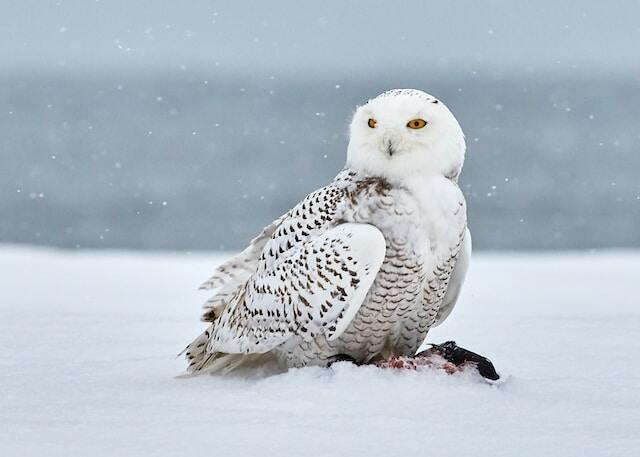
Explanation of Head-Bobbing in Owls
Head-bobbing is a behavior commonly observed in owls. It has been observed in various owl species and can involve different types of head movements such as up and down, side to side, or circular motions. Head-bobbing may also vary depending on the context of the behavior.
At first glance, it may seem like head-bobbing is a nervous or anxious behavior; however, research has shown that it serves an important function for owls during hunting and communication with other owls.
In terms of hunting, a study conducted by researchers at the University of Lincoln found that head-bobbing helps owls maintain visual focus while moving.
This is due to a reflex called vestibulo-ocular reflex (VOR) which allows the eyes to remain focused on a target while the owl moves its head. This enables the owl to track prey more effectively while flying through dense vegetation or when dealing with moving prey.
Another function of head-bobbing is communication between mates or family groups. For example, some studies suggest that male great horned owls use rapid up-and-down head movements during courtship rituals to signal dominance over their mate.
Understanding why do owls bob their heads requires understanding owl behavior and anatomy. By analyzing how they hunt and communicate with each other we can begin to understand how this unique behavior serves specific purposes in their life cycle.
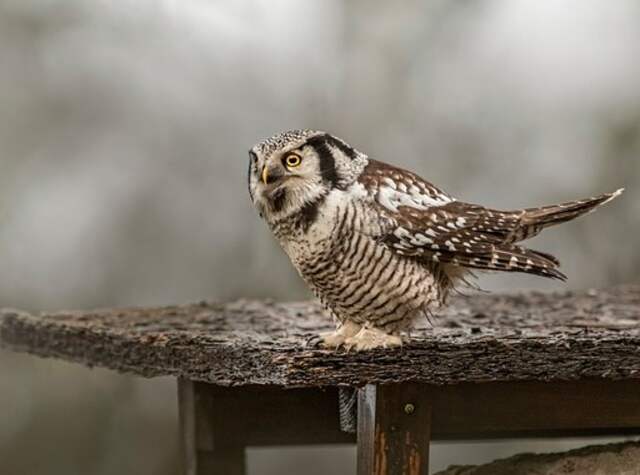
The Science Behind Head-Bobbing
Owls are fascinating creatures with unique physical characteristics and behaviors. One of the most intriguing behaviors of owls is their head-bobbing. To understand why owls bob their heads, it is essential to look at the science behind it.
Anatomy of an Owl’s Neck and Head
Owls have a distinctive neck that allows them to rotate their head almost 270 degrees in either direction, which gives them a complete 360-degree view of their surroundings. The owl’s cervical vertebrae have specialized joints that allow for this hypermobility.
The number of cervical vertebrae in owls varies depending on the species, but typically owls have around 14 cervical vertebrae, which is twice as many as humans. The owl’s head is also unique in its structure.
Their large eyes are fixed in place and cannot move independently like human eyes can. Instead, the owl must move its entire head to change its field of vision.
Explanation of Vestibulo-Ocular Reflex (VOR)
The vestibulo-ocular reflex (VOR) is a system that helps maintain visual focus during movement. It works by sending signals from the inner ear to the brainstem, which then sends commands to adjust eye position relative to head movement.
In owls, the VOR plays a crucial role in maintaining visual focus while moving their heads rapidly during flight or hunting activities.
How VOR Helps Owls Maintain Visual Focus While Moving
When an owl bobs its head rapidly during flight or hunting activities, it would blur any image received by their eyes if not for the VOR system.
The inner ear senses these rapid movements and sends signals to adjust eye position relative to head movements necessary for maintaining visual focus on prey or surroundings.
This allows the owl’s brain to create a stable visual image even though there are rapid movements happening all around them.
The VOR system has been studied extensively in owls and is considered one of the most efficient sensory-motor systems in the animal kingdom.
Conclusion
The unique neck and head anatomy of owls, combined with the VOR system, allows them to maintain visual focus while moving their heads rapidly. This is essential for hunting and navigating their environment. The next section will explore how head-bobbing helps owls locate prey.
The Art of Hunting: How Head-Bobbing Helps Owls Locate Prey
Owls are known for their exceptional hunting skills and the unique techniques they use to capture their prey. One of the most fascinating and distinctive behaviors that owls exhibit while hunting is head-bobbing. This behavior, while seemingly odd, is actually a crucial part of an owl’s successful hunt.
Explaining Hunting Techniques Used by Owls
Owls have a variety of hunting techniques that they use depending on the type of prey they are targeting. For example, some species like the Great Gray Owl will sit on a perch and wait for prey to come close enough to pounce on it, while others like the Barn Owl will fly low to the ground hunting small mammals like mice.
How Head-Bobbing Helps Owls Locate Prey
Head-bobbing is particularly useful when an owl is trying to locate its prey in low light conditions. The motion helps an owl’s eyes adjust more quickly to different light levels, allowing them to scan their environment more efficiently.
By bobbing their heads up and down, owls can also triangulate where sounds are coming from with greater accuracy. Additionally, head-bobbing can help an owl judge distances between themselves and potential prey.
When an owl bobs its head down towards the ground, it judges how far away it is from potential food sources by analyzing how much closer stationary objects appear when viewed from different angles.
Examples of Different Owl Species and Their Unique Hunting Methods
Different types of owls have evolved various ways to hunt, with head-bobbing as a common factor across almost all species.
For example, Snowy Owls in the Arctic tundra use their excellent hearing abilities combined with head movements to locate lemmings under deep snow cover.
In contrast, Short-eared Owls that hunt during the day in open fields use head-bobbing frequently while trying to locate small mammals in tall grasses.
Other species like the Northern Saw-whet Owl bob their heads less often because they tend to hunt more stationary prey, such as insects.
Overall, hunting is a crucial part of an owl’s survival, and different types of owls have evolved various hunting techniques based on their habitats and prey.
Head-bobbing is just one of the unique behaviors that owls use to help them thrive in their environments.
Conclusion
Head-bobbing is a critical component of an owl’s hunting success. It helps them locate prey more efficiently while also allowing them to judge distances with greater accuracy.
Understanding how different species of owls utilize head-bobbing can provide valuable insights into their behavior and survival strategies, which can be used for conservation efforts.
Owls are magnificent creatures, and studying their unique behaviors only adds to their mystique and importance in our natural world.

Communication and Head-Bobbing
How owls use head-bobbing to communicate with each other
Owls are known for their unique ways of communicating. They use a variety of vocalizations, including hoots, screeches, and whistles.
However, they also use body language to convey messages to each other. Head-bobbing is one such way in which owls communicate with each other.
Head-bobbing is a common behavior observed in many owl species. It involves moving the head up and down rapidly in a rhythmic manner.
The movement is usually repeated several times, and the duration can vary depending on the context of the communication. Owls use head-bobbing to signal a variety of messages to other owls.
It can be used as a greeting between mates or family members or as a warning signal to potential predators or intruders. The speed, frequency, and intensity of head-bobbing can convey different emotions such as aggression or submission.
Different types of head-bobs and their meanings
There are several types of head-bobs observed in different owl species that have varying interpretations. One type is called the “nodding” or “bobbing” motion, where the owl moves its entire upper body up and down while keeping its feet stationary on the perch.
This type of motion signals territorial ownership or dominance. Another type is called “dipping,” where the owl only moves its head up and down while keeping its body still on the perch. This motion is often used as an invitation for mating between males and females.
A third type is called “sideways” or “lateral” bobbing, where the owl tilts its head from side to side rapidly while keeping its body still on the perch. This motion can indicate confusion or curiosity about something in their environment.
Examples of communication through head-bobbing in different species
Different owl species have unique ways of using head-bobbing to communicate with each other. For example, the great horned owl uses head-bobbing to signal aggression and territorial ownership.
The snowy owl, on the other hand, uses a more subtle form of head-bobbing to communicate with its mate during breeding season.
In addition to mating and territorial signals, owls also use head-bobbing for non-verbal communication while hunting. For example, short-eared owls bob their heads while flying low over the ground in search of prey.
This motion helps them detect prey movement and adjust their flight path accordingly. Other species like the screech owl use rapid head movements to mimic a snake’s movements, which can be used as a defense mechanism against potential predators.
Overall, head-bobbing is an essential behavior displayed by owls that serves as a valuable tool for communication and survival in their natural habitats.
Understanding these behaviors can help researchers better understand and protect these fascinating creatures.
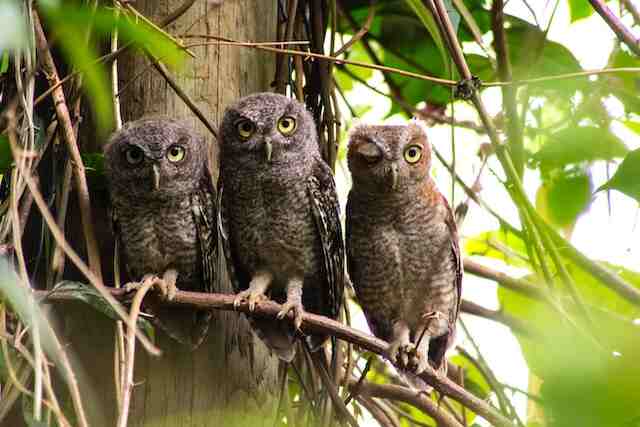
Conclusion
Summary of Key Points
Throughout this article, we have explored the fascinating behavior of head-bobbing in owls. We discussed the science behind owl neck and head anatomy and how this allows for the vestibulo-ocular reflex (VOR) to help maintain visual focus while moving.
We also examined how head-bobbing assists owls in hunting techniques and communicating with each other. We learned that different owl species use unique methods when hunting, and their communication methods vary as well.
Some species use more exaggerated head-bobs than others to signal certain messages to other owls. Understanding these different behaviors is critical to preserving these beautiful creatures.
Importance of Understanding Owl Behavior for Conservation Efforts
Owls play an important role in maintaining ecological balance by controlling rodent populations, which can cause crop damage and spread diseases. Unfortunately, many owl populations are declining due to habitat loss, climate change, and other factors.
By understanding owl behavior, we can better protect their habitats and ensure their survival for future generations. This includes preserving natural habitats that provide food, shelter, nesting sites for these birds.
Furthermore, research into owl behavior can help us develop more effective conservation strategies that take into account not only environmental factors but also behavioral patterns.
For example, if we understand how owls communicate with each other through head-bobbing or which hunting techniques they prefer during different seasons or weather conditions, we can create interventions targeted at reducing human activity during critical moments of owl activity.
Learning about why owls bob their heads offers a glimpse into the complex lives of these magnificent birds.
By studying their behavior more closely and using that knowledge to inform conservation efforts across the world, we can help preserve these important creatures for generations to come, while also promoting a healthier planet overall.

FAQs: Why Do Owls Bob Their Heads?
What is head-bobbing in owls?
Head-bobbing in owls is a common behavior where the owl bobs its head up and down, side to side, or in a circular motion.
Why do owls bob their heads?
Owls bob their heads to improve their depth perception and enhance their ability to see their prey, even in low light conditions.
Do all owls bob their heads?
No, not all owls bob their heads. Head-bobbing is more commonly seen in species that have eyes positioned at the front of their head, such as the Barn Owl.
Is head-bobbing a sign of aggression in owls?
No, head-bobbing is not a sign of aggression in owls. It is a natural behavior that helps them hunt and survive in their environment.
Can humans imitate the head-bobbing behavior of owls?
Yes, humans can imitate the head-bobbing behavior of owls. However, it does not serve the same purpose for humans as it does for owls.
Do baby owls also bob their heads?
Yes, baby owls also bob their heads. They do this to exercise their neck muscles and improve their coordination.
How fast do owls bob their heads?
The speed of head-bobbing in owls can vary depending on the species and situation, but it can range from a few times per second to up to 12 times per second.
Do owls bob their heads when they are not hunting?
Yes, owls may also bob their heads when they are not hunting. It is a natural behavior that helps them to stay alert and aware of their surroundings.
Can head-bobbing in owls be used for identification?
Yes, head-bobbing in owls can be used for identification. The pattern and speed of head-bobbing can be unique to different species and individuals.
Are there any other animals that bob their heads like owls?
Yes, other birds such as doves and pigeons also bob their heads, but their reasons for doing so may be different from those of owls.

